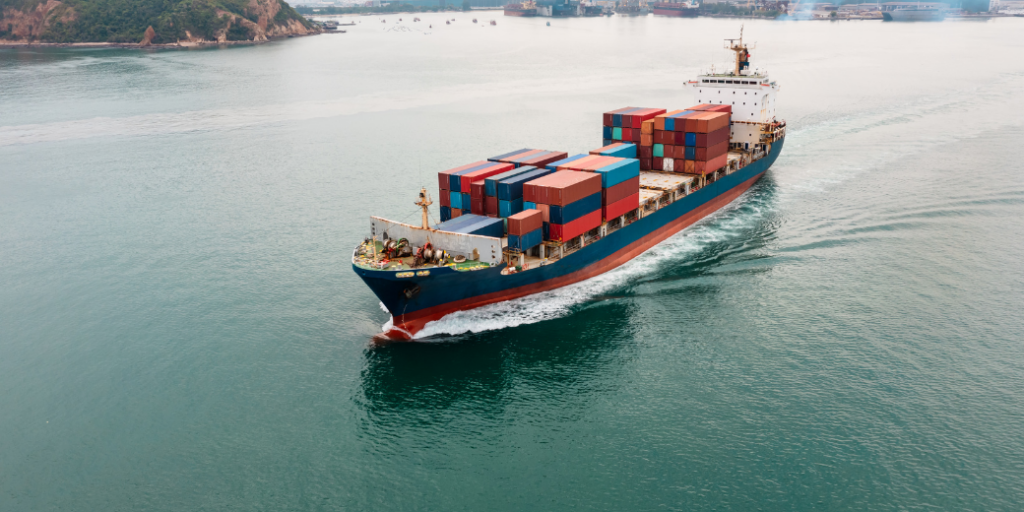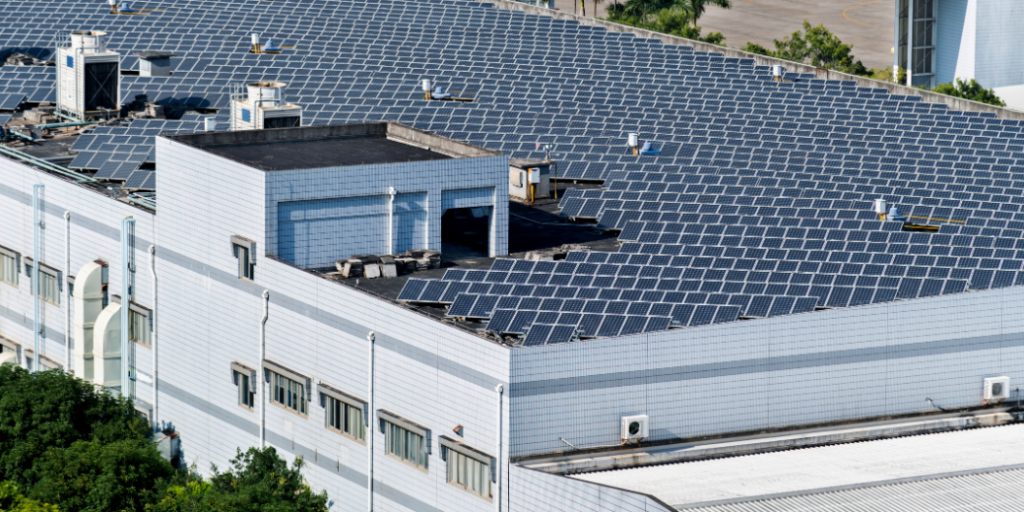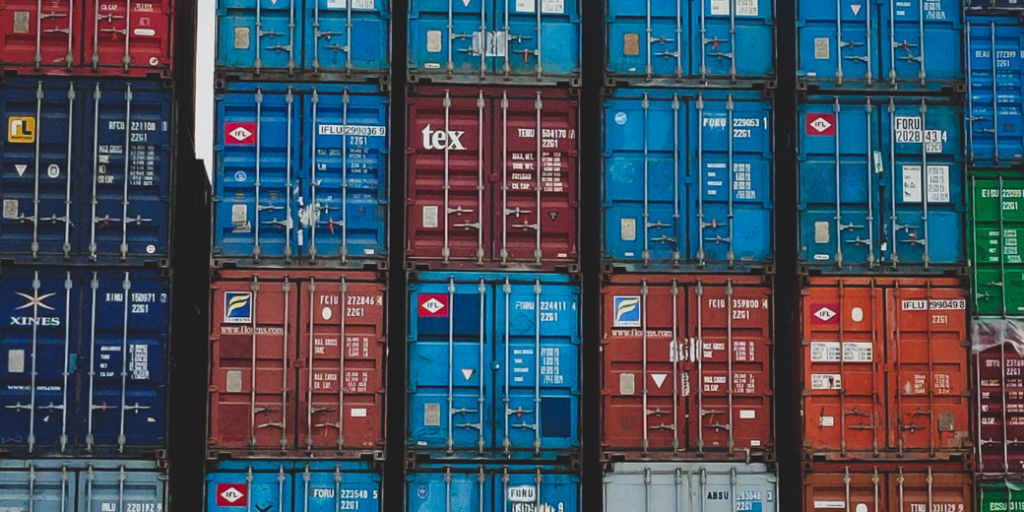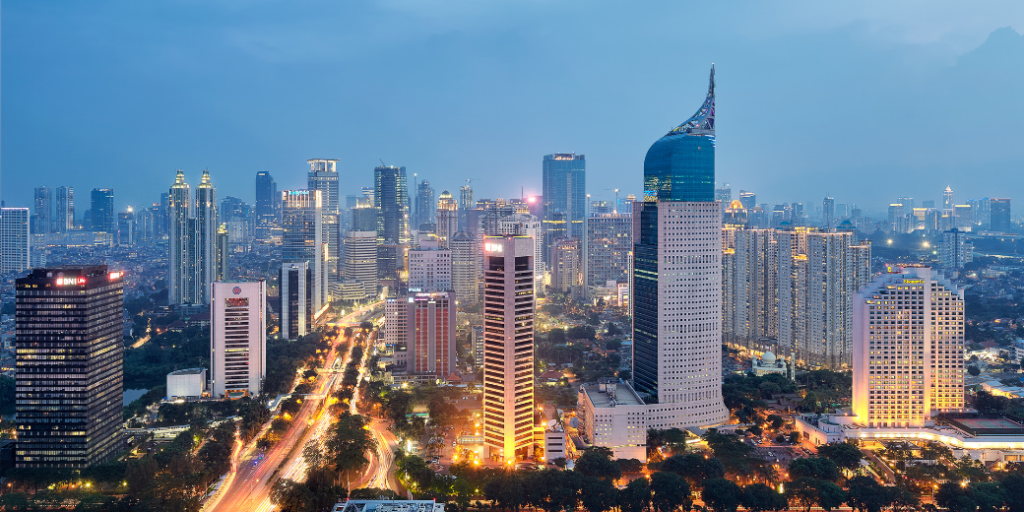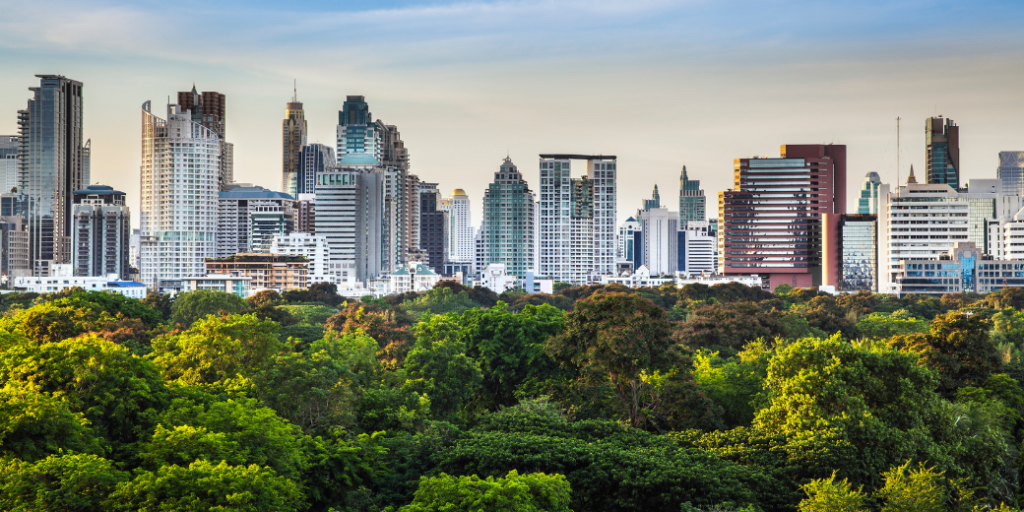Trend Reports
1Q25 ASEAN’s Environmental Landscape

Summary
In Q1 2025, ASEAN-5 economies countered US tariff threats with growth-focused reforms and bold green transitions to secure FDI and trade stability.
ASEAN-5 Economies Demonstrate Resilience During Tariff Threats
| Navigating Macroeconomic Trends in ASEAN-5
ASEAN’s environmental landscape saw steady growth in the first quarter of 2025, as Indonesia, Thailand, Vietnam, Malaysia, and Singapore maintained a resilient trajectory despite escalating US tariff threats and a complex global backdrop.
Each nation’s performance was distinct, reflecting diverse domestic conditions and strategic responses to external pressures. Indonesia’s growth was driven by exports and robust FDI, despite subdued domestic demand. Thailand leveraged public investment and strong exports for moderate growth, attracting significant FDI into its digital sector despite potential US duties on solar panels. Vietnam showcased impressive growth, notably in manufacturing, benefiting from front-loaded orders and substantial FDI inflows, while actively engaging in diplomatic efforts to mitigate tariff impacts.
Conversely, Malaysia achieved its growth target through strong private consumption but faced a notable decline in FDI, prompting diversification efforts in response to proposed US tariffs. Singapore, a regional economic hub, demonstrated resilient, broad-based growth with low inflation and a strengthening currency. While its FDI saw a minor dip, its strategic appeal remained intact, actively pursuing new trade agreements and adapting to US export controls on its critical semiconductor industry. Across the board, these nations are exhibiting adaptive strategies, from currency stabilization measures and interest rate adjustments to targeted investments and diplomatic engagements, to sustain economic momentum in an increasingly volatile global trade environment.
A common theme across ASEAN-5 is the proactive approach to mitigating the adverse effects of trade tensions, particularly from anticipated US tariffs. Countries like Indonesia and Vietnam are seeing businesses front-load exports, while governments are implementing policy reforms and engaging in diplomatic dialogues to protect key sectors. Simultaneously, the region is actively seeking to diversify export markets and strengthen regional economic integration to build greater resilience against external shocks. This includes a strategic shift towards attracting foreign direct investment into high-value sectors, as seen with Thailand’s digital focus and Indonesia’s resource-based investments, demonstrating a concerted effort to enhance competitiveness and adapt to evolving global supply chains.
| Green Transition Accelerates Through Policy-Driven Investment
The first quarter of 2025 marked a period of intensified commitment across the ASEAN-5 nations towards environmental sustainability, with strategic policy initiatives serving as crucial catalysts for green transitions and the attraction of sustainable investments. Each country is actively developing frameworks and mechanisms to integrate environmental considerations into their economic policies, fostering a more sustainable and resilient future. These efforts range from establishing carbon markets to introducing new financial instruments and stricter sustainability regulations.
Indonesia is notably advancing its net-zero emissions goals by opening a carbon market to global participants and providing government guarantees to de-risk renewable energy projects, aimed at drawing substantial green investment. Similarly, Thailand is bolstering its ESG landscape through the approval of new ESG funds, the launch of a centralized carbon data platform, and mandatory ESG disclosures for listed companies, thereby aligning with global standards for mobilizing green capital. Vietnam is accelerating its green transition by incentivizing hydrogen-based energy projects and implementing a clear carbon market roadmap, alongside new criteria for green credit and bond eligibility to standardize green finance.
Malaysia’s focus lies in enacting stricter climate regulations, including a proposed Carbon Capture, Utilisation, and Storage (CCUS) Bill to become a regional hub, and enhancing mandatory palm oil sustainability standards to address deforestation and emissions. Singapore continues to strengthen investor confidence in low-carbon companies, evidenced by positive index performance, and has sharpened its climate targets with significant budget allocations for clean energy initiatives. Collectively, these nations are demonstrating a concerted regional effort to build a foundation for a greener economy, attracting capital and fostering innovation in pursuit of their ambitious sustainability objectives.
Country-Specific Economic and Environmental Progress
| Indonesia: Growth Driven by Exports and Green Initiatives
Indonesia’s economy in the first quarter demonstrated resilience amidst global complexities and domestic nuances. While economic growth was recorded, it slightly fell short of government projections, largely influenced by subdued domestic consumption and global trade uncertainties. Exports, however, provided a significant boost, possibly reflecting efforts to accelerate shipments ahead of anticipated trade restrictions. The central bank adjusted its economic outlook downwards, acknowledging the impact of softening global demand and escalating trade tensions. The prospect of increased US tariffs on Indonesian exports poses a particular challenge for labor-intensive industries.
The nation’s trade balance remained positive, with exports outstripping imports. Key commodities like nickel and iron and steel continue to be strong performers, supported by external demand. Conversely, the copper mining sector faces hurdles due to export restrictions. Inflation remained contained, prompting the central bank to implement interest rate cuts to stimulate economic activity and stabilize the currency. Despite these measures, the Rupiah experienced some depreciation, necessitating central bank intervention.
FDI continued its upward trend, particularly directed towards mining, metal smelting, and infrastructure, highlighting Indonesia’s resource wealth and development needs. However, investments from certain regional partners saw a contraction, potentially due to policy uncertainties. Indonesia’s strategy to counter US tariffs includes domestic policy reforms aimed at enhancing competitiveness and fostering strategic partnerships. The launch of a new sovereign wealth fund, with significant initial capital, signals an ambitious plan to drive substantial GDP growth through investments in key sectors like mineral resources and renewable energy. Furthermore, special economic zones are proving effective in attracting significant industrial investment.
Sources: BPS 1Q 2025 | Trading Economics| Indonesia Business Post | News of Indonesia| Indonesia Investments
| Thailand: Public Investment and Digital FDI Offset Tariff Concerns
Thailand’s economy experienced moderate growth in the first quarter, exceeding expectations, primarily driven by a substantial increase in public investment and robust exports. Private consumption also contributed modestly to this expansion. The country achieved a trade surplus, indicating that exports grew at a faster pace than imports.
However, the economic outlook for the remainder of the year suggests a potential slowdown, influenced by anticipated weaker exports and lingering high debt levels. Headline inflation remained below the central bank’s target, prompting further interest rate cuts to stimulate economic activity and ease borrowing costs for businesses.
FDI into Thailand saw a significant surge, with a large portion directed towards the digital industry, particularly data centers. Singapore emerged as the primary source of this investment, often acting as a conduit for capital from Chinese and US companies. Despite these positive investment trends, the imposition of US anti-dumping and countervailing duties on solar panels from Southeast Asia presents a considerable threat to Thai exports. In response, Thailand’s government is challenging these duties internationally and actively exploring new export markets and trade strategies. Concurrently, a proposed auto-scrappage scheme aims to invigorate domestic demand and accelerate the adoption of electric vehicles.
Source: NESDC | Trading Economics | Public Debt Management Office
| Vietnam: Manufacturing-Led Growth Amidst Tariff Mitigation
Vietnam’s economy demonstrated strong growth in the first quarter, moving closer to its ambitious annual target. This performance was notably driven by the manufacturing sector, which benefited from businesses accelerating orders ahead of potential US tariffs. Consumption and capital formation also showed healthy increases. While overall growth was robust, there was a relative slowdown compared to the previous quarter, partly due to a notable increase in imports, influenced by a surge in machinery imports.
Manufacturing remained the dominant economic sector, contributing significantly to GDP growth, with strong performance in areas like motor vehicles, textiles, and machinery. In contrast, the mining sector experienced a decline, reflecting Vietnam’s broader shift towards sustainable development. Inflation remained stable and within the central bank’s target range, influenced mainly by rising costs in healthcare and construction materials. The central bank is expected to maintain stable interest rates to support growth and manage currency fluctuations, though the Vietnamese Dong experienced a slight depreciation. The stock market saw gains, despite volatility linked to US tariff announcements.
FDI into Vietnam, while lower quarter-on-quarter, showed a strong year-on-year increase. Singapore was the leading investor, primarily in real estate and manufacturing, with growing interest in renewable energy and IT. Despite a significant reduction in the trade surplus, supported by a positive trade balance and strong FDI, the currency maintained relative stability. The significant US tariff announcement on Vietnamese imports poses a substantial challenge, particularly for key export sectors reliant on the US market. Vietnam is actively engaging in diplomatic discussions to mitigate these impacts.
Source: General Statistics Office | Trading Economics | BaoChinhPhu | VnEconomy (1) | VnEconomy
| Malaysia: Consumption-Driven Growth and Diversification Despite FDI Decline
Malaysia’s economy achieved its growth target in the first quarter, driven by robust private consumption, which was supported by a strong labor market, stable inflation, festive demand, and a new minimum wage. Government spending also provided support, bolstered by public sector wage increases and ongoing development initiatives. Investment saw a significant surge, reflecting both domestic and foreign capital inflows, encouraged by government policies. Exports also experienced positive growth.
Despite the overall economic expansion, Malaysia faced headwinds from global uncertainty and trade tensions. Headline inflation continued its moderating trend, falling below the central bank’s target, though projections indicate a potential rise later in the year due to policy adjustments. The central bank maintained its policy rate, providing stability for businesses.
FDI experienced a sharp decline in the first quarter, reflecting a more cautious global investment climate. The services sector was the primary recipient of the remaining FDI, particularly in financial activities and information and communication. Major FDI sources included Singapore, Hong Kong, and the USA, though Japanese investment saw a reduction. The stock market declined, driven by market uncertainties and concerns over the impact of US tariffs on global trade. The Malaysian Ringgit appreciated against the US Dollar but depreciated against other major currencies. The proposed US reciprocal tariff poses a significant risk to Malaysia’s key export sectors. In response, Malaysia is intensifying efforts towards regional economic integration and market diversification to reduce external vulnerabilities. A notable partnership in the semiconductor industry aims to transform Malaysia’s role towards higher-value chip design, with potential positive impacts on GDP.
Source: DOSM| MOF| Trading Economies| The Star | CNA
| Singapore: Resilient Expansion and Strategic Green Investments
Singapore’s economy exhibited moderated yet resilient growth in the first quarter, surpassing initial projections despite a slight slowdown from the previous quarter. Growth was broad-based across its key sectors, including trade, manufacturing, and finance. Both external and domestic demand showed positive expansion, with private consumption contributing to this trend.
Inflation remained at a multi-year low, primarily due to moderation in accommodation costs and core inflation, offsetting increases in transport costs. However, the monetary authority has revised its inflation projections upward for later in the year. A declining overnight rate indicates ample liquidity and reduced loan demand, potentially easing borrowing costs for businesses and encouraging investment.
Merchandise trade continued to grow, though at a more moderate pace, with non-oil trade offsetting a decline in oil trade. Exports increased, driven by re-exports, despite a dip in domestic exports. Imports also saw growth. The Singapore Dollar strengthened against the US Dollar, supported by economic resilience and strong exports.
FDI experienced a marginal decline in the first quarter, following substantial growth in the previous period, attributed to global trade tensions and slower growth in key markets. Direct investment abroad also decreased. Despite these fluctuations, Singapore’s strategic position and pro-investor environment maintained its attractiveness. Major FDI sources included the US, UK, Japan, China, and Ireland, with the US leading, particularly in financial services and information and communications.
Policy updates include the implementation of a new free trade agreement, enhancing access to Latin American markets. The accelerated development of a special economic zone with a neighboring country has secured significant investment approvals, aiming to diversify supply chains and boost competitiveness amidst US tariff threats. Singapore’s crucial role as a semiconductor hub faces scrutiny due to US export control measures, prompting increased compliance efforts from firms. The recent general election result, with a strong mandate for the incumbent party, ensures political stability and policy continuity. In response to the proposed US universal tariff, Singapore has established a task force to support affected businesses, opting against retaliatory measures.
Source: SingStat | MTI | MTI | Trading Economics
| Make Smarter Business Decisions with Speeda
In a time of economic uncertainty and green transition across Southeast Asia, staying ahead requires more than headlines—it demands deep, reliable, and timely insights. Speeda is your one-stop intelligence platform offering access to over 11 million private company profiles, 3,000+ in-house industry reports, country-specific economic data, M&A deal databases, and real-time news coverage. From detailed company screening to macroeconomic and ESG trend analysis, Speeda equips you with the tools to make confident decisions in ASEAN markets like Indonesia, Vietnam, and beyond.




